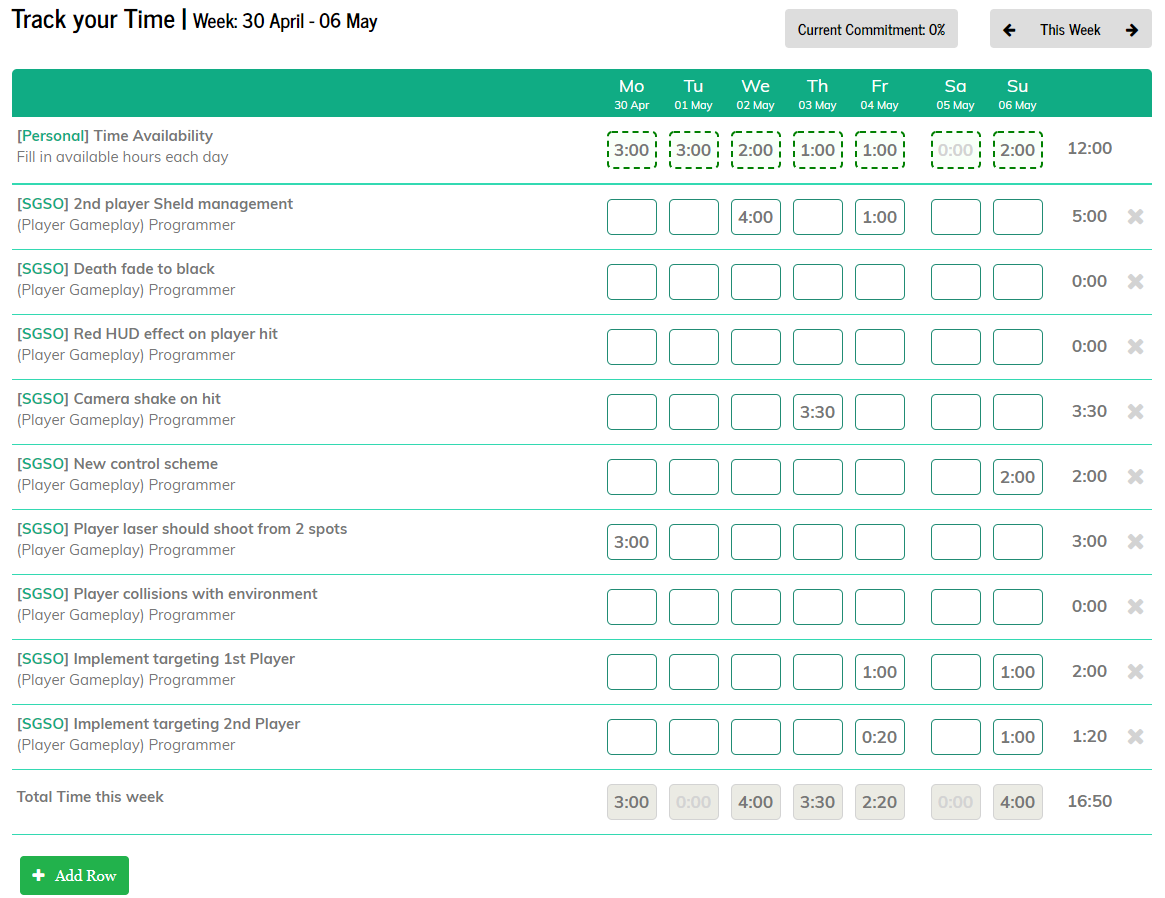Project Workflow
Scrum Methodology

The team used the scrum workflow.
At the start of each sprint, the producers requested the features they wanted to be for the next milestone. From that list of features, the team leads and the project producer, create a first version of the backlog with the tasks needed to fulfill the producers' requests.
Once the first backlog of tasks was created, the project producer and the team leads divided the team members into different groups to work in a subset of tasks to achieve the objective. Meanwhile, each team member fills an Excel sheet with their availability.
The groups, take a look at the backlog tasks assigned to them and propose changes or new ones if they think something was missing or the task can be split into smaller ones. Then they assign themselves to the tasks they'd like to do and estimate the amount of time each task will take to complete. From these times and the availability, each of the team members has a commitment value and depending on the value, the tasks were reassigned.
To manage better all the tasks and the scrum workflow, each team used a Trello board.

To manage the board, each team have a Scrum Master that was the responsibility to maintain the board organized and move the tasks at the stand-ups.
The stand-ups were made every class day. For the stand-ups to be useful not only for the group but also for the other teams if there are some dependencies between them, each group
take turns to do the stand-up so the other teams can listen or ask any short question they have for that team (long questions where discussed after the stand-ups to keep them short). The producers
also take part on the stand-ups to supervise the team progress.
We used a Trello plugging to track easily the hours left on each task. We set the number of hours we expect the task to take the task and then subtract the worked hours. But after some time we realized that that method wasn't useful at all since we couldn't have a deviation for the tasks or compare the worked hours with the availability of each member. To solve that, we developed a tool
to track the hours:

With the tool, the tracking of hours and time improved since the website allowed to set a timer to track the time by itself.
The ideal case and the expected one, was to have a release each day we meet at class, but the reality was that that was not possible due to development time and lack of changes between meeting days.
For the delivery of the milestone, the team decided a freeze day, usually 3-4 days before the delivery. After the freeze, the team only focus on fixing the bugs and polishing the build for the delivery, or at least, that was the
planed workflow. In reality, since the task estimations and real time differ, some small features were added after the freeze day.



















